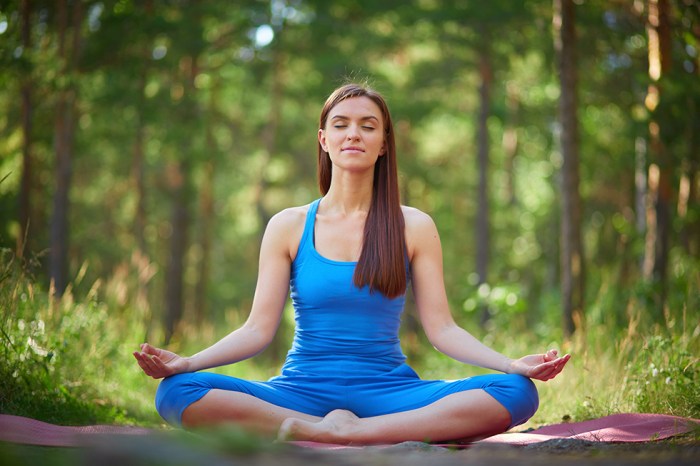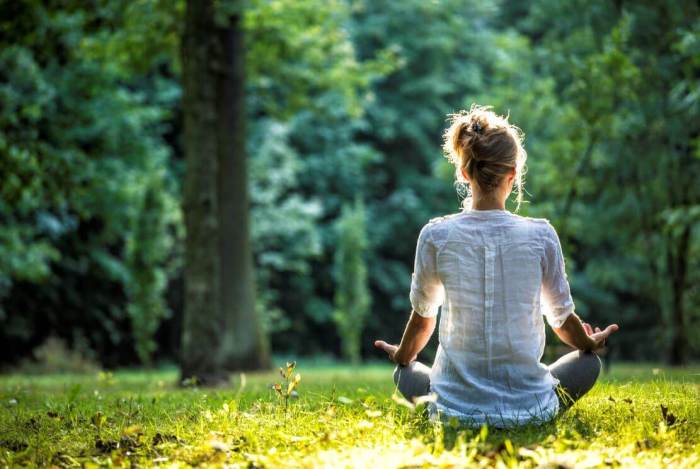How to Meditate for Finding Peace After a Long Day sets the stage for a journey towards tranquility and relaxation, offering insights into the art of meditation and its profound impact on stress relief and well-being.
Introduction to Meditation for Finding Peace After a Long Day

Meditation is like a magic potion for your mind, helping to calm the storm of stress and chaos that a long day can bring. It’s not just some hippy-dippy practice; it’s a scientifically proven way to reduce stress and promote relaxation. When you feel like your brain is going a million miles an hour, meditation can be your life raft, bringing you back to a place of calm and serenity.
Benefits of Meditation in Reducing Stress and Promoting Relaxation, How to Meditate for Finding Peace After a Long Day
Meditation is like hitting the reset button for your mind. By focusing on your breath or a mantra, you can quiet the noise in your head and let go of the tension that builds up throughout the day. Studies have shown that regular meditation can lower levels of cortisol, the stress hormone, leading to a more relaxed and centered state of being.
How Meditation Helps in Unwinding After a Busy Day
After a hectic day filled with deadlines, meetings, and endless to-do lists, meditation provides a much-needed escape. It gives you a chance to step away from the chaos and find a moment of peace within yourself. By taking the time to meditate, you can release the day’s stress and recharge your mind for whatever tomorrow may bring.
For those seeking to enhance their productivity and focus, meditation can be a game-changer. By incorporating mindfulness techniques into your daily routine, you can train your mind to stay present and attentive. Check out How to Meditate for Focused Productivity: 5 Tips for practical strategies to help you harness the power of meditation for improved concentration and efficiency.
Why Finding Peace Through Meditation is Essential for Overall Well-being
In today’s fast-paced world, finding moments of peace and stillness is crucial for maintaining mental and emotional well-being. Meditation offers a sanctuary amidst the hustle and bustle, allowing you to tap into a sense of inner calm and clarity. By making meditation a part of your routine, you can cultivate a greater sense of balance, resilience, and overall happiness in your life.
Setting Up a Relaxing Environment for Meditation

Creating a peaceful atmosphere at home is crucial for a successful meditation session. Here are some tips to help you set up a calming environment for meditation.
Research has shown that meditation can have numerous benefits for brain health and cognitive function. From improving focus and memory to reducing stress and anxiety, the practice of meditation can have a profound impact on the brain. Learn more about the 10 Proven Benefits of Meditation for Your Brain and discover how this ancient practice can support your mental well-being.
Choose a Quiet and Comfortable Space
When choosing a space for meditation, opt for a quiet area where you won’t be disturbed. Whether it’s a corner of your room or a cozy spot in the garden, find a comfortable space where you can relax and focus without distractions.
Use Lighting, Scents, or Music
Lighting
When it comes to boosting confidence, meditation can be a powerful tool. By practicing mindfulness and self-reflection, individuals can cultivate a sense of inner strength and assurance. For those looking to enhance their self-esteem, How to Meditate to Boost Confidence: 7 Tips offers valuable insights and techniques to help you on your journey towards greater self-belief.
Dim the lights or use candles to create a soft, soothing ambiance. Natural light can also be beneficial, so choose a space with good natural lighting if possible.
Scents
Consider using essential oils like lavender or eucalyptus to promote relaxation. Diffusing these scents in the air can help you unwind and enter a meditative state.
Music
Soft, calming music or nature sounds can enhance your meditation experience. Create a playlist of tranquil tunes or sounds of the ocean to help you relax and focus during your practice.
Different Meditation Techniques for Finding Peace

Meditation offers various techniques to help you find peace and relaxation after a long day. These techniques focus on calming the mind, reducing stress, and promoting overall well-being.
Mindfulness Meditation
- Focuses on being present in the moment and observing thoughts and sensations without judgment.
- Helps in reducing stress, improving focus, and increasing self-awareness.
- Personal Experience: Practicing mindfulness meditation before bed helped me let go of the day’s worries and fall asleep more peacefully.
Body Scan Meditation
- Involves mentally scanning your body from head to toe, focusing on each part and releasing tension.
- Helps in relaxing muscles, improving body awareness, and promoting physical relaxation.
- Personal Experience: Body scan meditation helped me release physical tension and feel more at ease after a hectic day at work.
Loving-Kindness Meditation
- Focuses on cultivating feelings of compassion, love, and kindness towards oneself and others.
- Helps in reducing negative emotions, increasing empathy, and fostering a sense of connection.
- Personal Experience: Practicing loving-kindness meditation helped me feel more positive and forgiving towards myself and others, leading to a sense of inner peace.
Incorporating Breathing Exercises into Meditation: How To Meditate For Finding Peace After A Long Day

Breathing exercises play a crucial role in calming the mind during meditation. By focusing on deep and intentional breathing, you can center yourself, reduce stress, and find peace after a long day.
Practice Deep Breathing During Meditation
- Find a comfortable position, either sitting or lying down, with your back straight and shoulders relaxed.
- Close your eyes and take a few natural breaths to settle into the practice.
- Begin to inhale deeply through your nose, feeling your belly expand as you fill your lungs with air.
- Hold your breath for a moment, then exhale slowly and completely through your mouth, feeling your belly contract.
- Repeat this deep breathing pattern, focusing on the sensation of the breath entering and leaving your body.
Variations of Breathing Techniques
- 4-7-8 Breathing: Inhale for a count of 4, hold for a count of 7, and exhale for a count of 8. This technique can help in reducing anxiety and promoting relaxation.
- Nadi Shodhana (Alternate Nostril Breathing): This technique involves breathing through one nostril at a time, promoting balance and clarity in the mind.
- Breath Counting: Count your breaths from 1 to 10, then start over. This method helps in maintaining focus and calming the mind.
- Belly Breathing: Place one hand on your chest and the other on your belly. Inhale deeply through your nose, allowing your belly to rise, then exhale slowly through your mouth, feeling your belly fall.
In conclusion, mastering the art of meditation can be a powerful tool in achieving peace and serenity after a hectic day, paving the way for a more balanced and harmonious life.